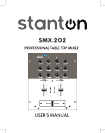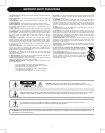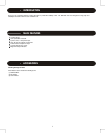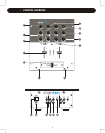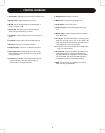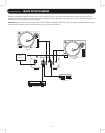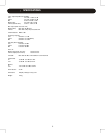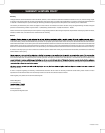
1. Channel Gain - Adjusts the pre-fader volume for cleaner sound.
2. Mic Input Gain - Adjusts microphone input level.
3. Mic EQ - The mic channel includes a two-band EQ with a
range of +10dB to -10 dB.
4. Channel EQ - Adjusts the high, mid and low frequency
levels of the input channels for your desire.
5. Input Fader - Controls individual source levels (channels) in
the mix.
6. Crossfader - Used to mix the sound from both channels.
7. Mic Input - Insert your ¼” microphone plug here.
8. Headphone Input - Insert your ¼” headphone plugs here.
9. Input toggle switch - Selects which source will be active
based on what you have connected to the rear panel input
section (phono/line).
10. Channel Cue / Cue Pan - Used to preview channel audio
to
your headphones. Listen
here before bringing up
channel faders or moving the crossfader.
11. Headphone Level - Adjusts cue volume.
12. Master Level - Controls the overall output level.
13. Power Switch - Turns unit off and on.
14. Power Connector - Plug in the included power supply
here.
15. Master Output - Unbalanced RCA connectors controlled
by the Master level.
16. Line Inputs - Unbalanced RCA jacks for connecting stereo
audio from line level sources such as CD players, HiFi
VCRs, cassette decks, DAT machines, laser discs, tuners,
even synthesizers or other mixing consoles.
Note: Plug mono audio sources into both Left and Right inputs
using a "Y" cable connector.
17. Phono Inputs - Plug your
turntabl
es in here. When these
connectors are used, your signal is fed directly to the
high-quality RIAA phono pre-amplifiers. Use this position
only for turntables. Line level sources will overload the
sensitive phono preamps and will cause distortion.
18. GND - Connect each of your turntable ground leads to
either of the two ground terminals.
CONTROL OVERVIEW
3



